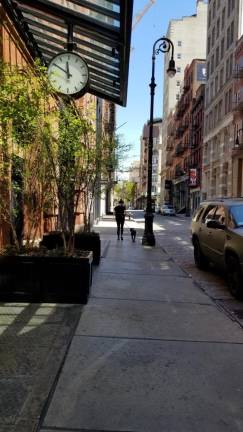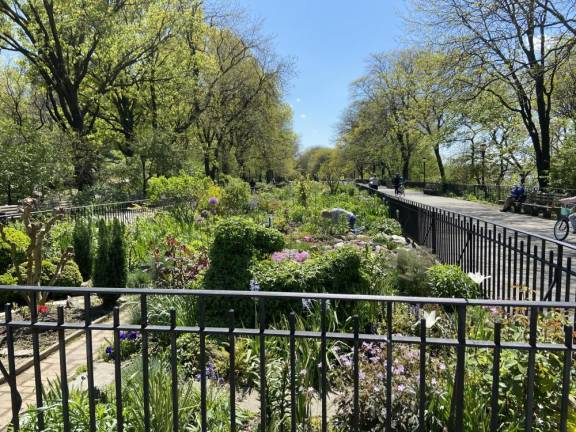COVID-19 and the City Soundscape


I have been writing about sound and noise for many years, but I can honestly say I have not heard so much interest in sound as there had been during the first months of the COVID-19 pandemic. There was talk about hearing and seeing more birds; not being awakened by overhead jets in the early morning hours; not being subjected to loud construction noises; and no music from nearby bars. However, an increase in loud ambulance sirens disturbed our ears and upset our minds because this meant more people were likely suffering from COVID-19.
The research findings that noise adversely impacts on mental and physical health are plentiful as are the writings on the importance of “quiet” in our environment. Yet it took a worldwide pandemic to heighten an interest in the sounds and noises around us and to provide an opportunity for researchers to examine sound and noise in a way that might allow us to advocate more strongly for a less noisy world.
With the pandemic resulting in less noise, scientists were given the opportunity to collect the kind of data that may help them find ways to keep our planet quieter in the future. A quieter planet will mean a healthier one for humans and the other species with whom they share this earth. For example, a study in India compared sound levels before stone-quarrying areas were locked down as a result of the pandemic with sound levels after the shutdown and found a dramatic drop in noise. The authors of this study hope that after the lockdown period ways will be explored to keep sound levels lower.
Researchers in the U.K. are involved in a program entitled The Quiet Project in which they have been measuring decibel levels in different areas of the country. They hope their data will be used by urban planners to factor in more “tranquil areas” in cities. Seismologists, interested in how the pandemic altered human activities, were able to detect small earthquakes which could provide information that could make future earthquakes more predictable. Oceanographers concerned about the impact of ocean noise on the well-being of marine animals were able to learn more about these mammals in less noisy oceans.
On the other hand, there were sounds that disappeared during the pandemic that were rightfully missed. The commentators announcing the Kentucky Derby race on September 5 this year mentioned that the horses and their jockeys will not be hearing the cheering of the attendees as they march their horses to the starting gate. The sounds emitted by fans to cheer on their favorite teams are still absent. We may miss the Thanksgiving Parade cheers as well as those accompanying the ball dropping on New Year’s Eve this year.
Now as restrictions are lessened, we learn of a role sound itself may play in the spread of COVID-19. The opening of bars and restaurants in some states has led to an uptick in COVID-19 cases and so closures had to follow in some cases. One explanation might be that the overall loudness of bars and restaurants, which are often poorly ventilated, may result in louder conversations among people in close proximity and, according to an Atlantic September 30 article by Zeynep Tufekci, these loud conversations could increase the risk of transmitting the virus.
While customers have complained before the pandemic that loudness in restaurants disturbed their dining experiences, this added concern that loud conversations might spread the COVID-19 virus should underscore the need for restaurant sound level guidelines. Additionally, the discussions around President Donald Trump becoming infected with COVID-19 have focused on the shouts he directed at his opponent Joseph R. Biden Jr. at their recent debate.
As we look forward to a future with less COVID-19 worries and the return of greater noise from road, air and boat traffic, construction and music from nearby establishments, I raise the following questions. Will people who experienced the benefits of a “less noisy” environment ask for lower decibel levels in their environment? Will public officials introduce legislation that will require quieter equipment and tools, quieter aircraft, and the use of quieter pavements to reduce traffic noise? Will legislators pay more attention to the enforcement of present and future noise ordinances? Will airports explore using routes that will be less noise intrusive on nearby residents?
With more people turning to bike travel during the pandemic, will transportation planners in cities provide more bike lanes allowing these people to continue to use their bicycles for their travel needs? Will builders of new homes and apartment buildings focus their designs on appropriate acoustics as well as visual attractiveness? Will public transportation agencies work towards providing quieter systems which in the long run will be more efficient systems? Will city planners protect “quieter soundscapes” and advocate for additional greener spaces in urban areas?
The human species must be reminded that they share the earth with other species and that human-made noises can harm them as well as other animals and plants.
Arline L. Bronzaft, Ph.D., is a Professor Emerita, CUNY.